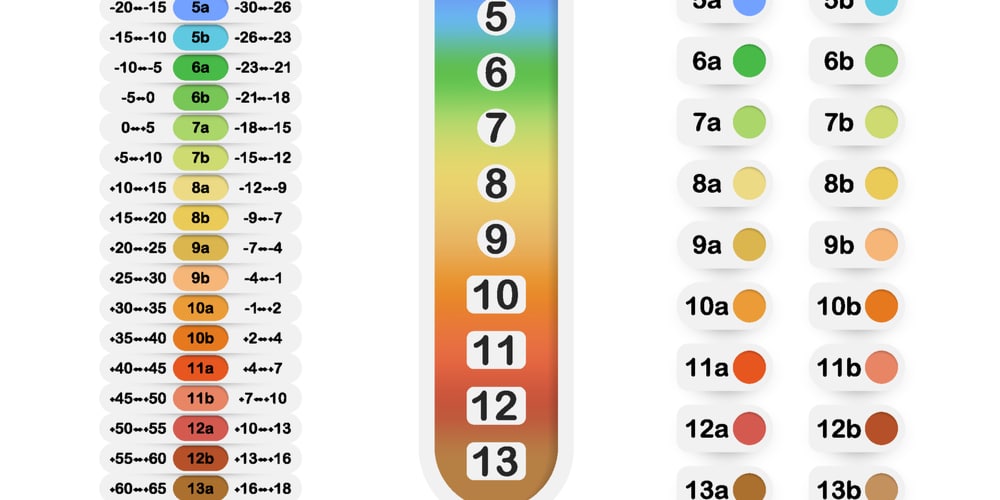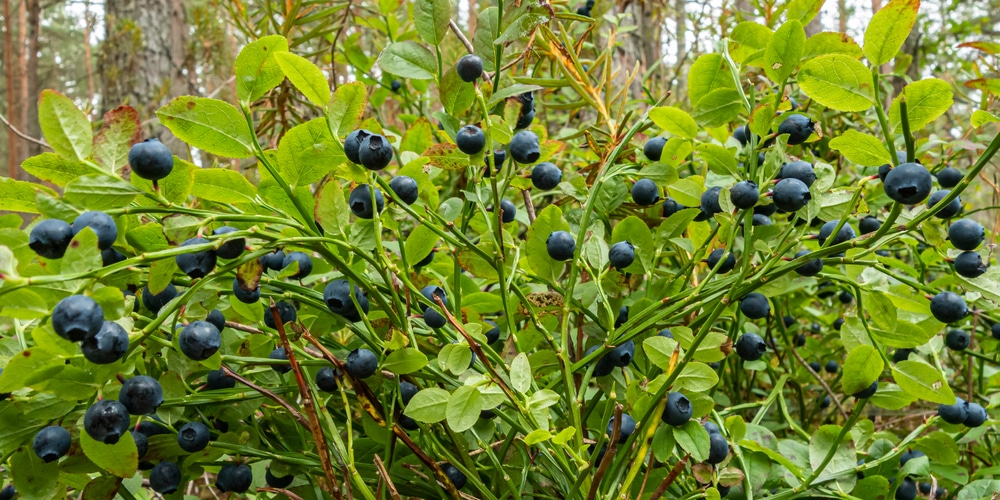Homegrown blueberries are some of the most favorite summertime snacks. Blueberries have a sweet-tart flavor that is excellent for enjoying fresh from the garden, baked in a pie, blended into a pancake batter, or cooked down to make jam.
Though cultivating blueberries at home is not for everyone, with the right condition, this fruit can make the perfect crop to plant in areas of your garden with full sun and well-draining acidic soil.
We’ve compiled a list of Blueberry suggestions for zone 5:

1. Bluecrop (Zones 4-7)
Bluecrop is a unique blueberry that has an intense flavor and deep color. Bluecrop is an upright, vining plant that can grow up to 5-6 feet tall and spread 4-6 feet wide. They are relatively large, making them a great crop for home gardeners looking to grow fruit on a small scale.
Like other blueberry plants, Bluecrop prefers full sun and well-drained soil. You can expect continuous production and consistent yields from this mid-season cultivar that produces flowers from May and is ready for harvest by early August.
2. Blueray (Zones 4-7)
Producing sweet, light blueberries that are ripe by early to mid-July, Blueray is very popular for cross-pollination. It is a disease-resistant, upright bush that grows up to 5- 6 feet maximum height and 3- 4 feet wide. Like other blueberry plants, Blueray prefers full sun and well-drained soil.
This Northern Highbush cultivar is known for producing high yields, which can stress the plant, so you should prune it regularly and carefully to keep it in great shape.
3. Legacy (Zones 5-8)
It’s a Northern Highbush variety that is known for the delicious taste of its large berries. This variety can reach a max height of over 6 feet at maturity and spread 3 -6 feet wide. It has great flavor and produces a well-formed berry with a deep blue color. It is a disease-resistant plant that prefers full sun, well-drained soil.
4. Pink Icing (Zones 5-10)
Pink Icing is known for its strong flavor. They reach a mature height of 3-4 feet and have an upright spread of 4-5 feet, with their berries ready for harvest mid-season. Pink Icing prefers well-drained soil and full sun like other blueberry plants but can tolerate partial shade.
This plant is relatively low maintenance, so you won’t have to worry about lots of pruning, especially with the self-pollinating dwarf variety.
5. Sunshine Blue (Zones 5-10)
Sunshine Blue sets itself apart in terms of ornamental value, with beautiful pink flowers in the spring and gorgeous blue-green foliage that often turns reddish-purple in the fall. It produces sweet and delicious medium-sized berries that are deep blue in color with a sweet and juicy flavor. You can expect continuous production and consistent yields from this mid-season cultivar that is ready for harvest in late July and August.
‘Sunshine Blue’ can do well in a variety of soils (so long as the soil is well-drained) and even partial shade, although full sun is the most preferred for the highest yields. Also, grow this plant with another variety to cover the bases for cross-pollination.
The Best Time To Grow Blueberries In Zone 5
The best time to plant blueberries is in spring or late fall in all regions, except in the coldest places. In USDA Zones 5 and below, it’ll be best to wait to plant your blueberries in early to mid-spring. If possible, 1- to 3-year-old blueberry plants are the ideal choice. You can buy these young plants in containers or bare-root from a nursery or online.
How to Plant Blueberry Bushes
Dig a hole twice as wide and deep as the blueberry bush.
Plant the blueberry in the hole and cover it with soil. Remember, blueberries do have seeds.
- Water well to settle the soil around the plant and water again after two days to a week, depending on your climate.
- After two weeks, add some topsoil or compost to the planting hole if necessary to bring up the soil around the plant to about 5 inches below ground level.
- Continue watering if needed for about one month after planting until all danger of frost has passed in your area (usually mid-May). However, ensure that the soil is well-drained to prevent root rot.
- Once established, blueberries will take 2 to 3 years before you begin to get large harvests, but it’s worth the wait.
- When a blueberry bush is dormant, prune back any branches that are too long and dense (this will encourage the bush to grow more branches). Pruning also helps the plant to stay compact and healthy looking for a long time!
Related Article: Bad Blueberry Companion Plants

